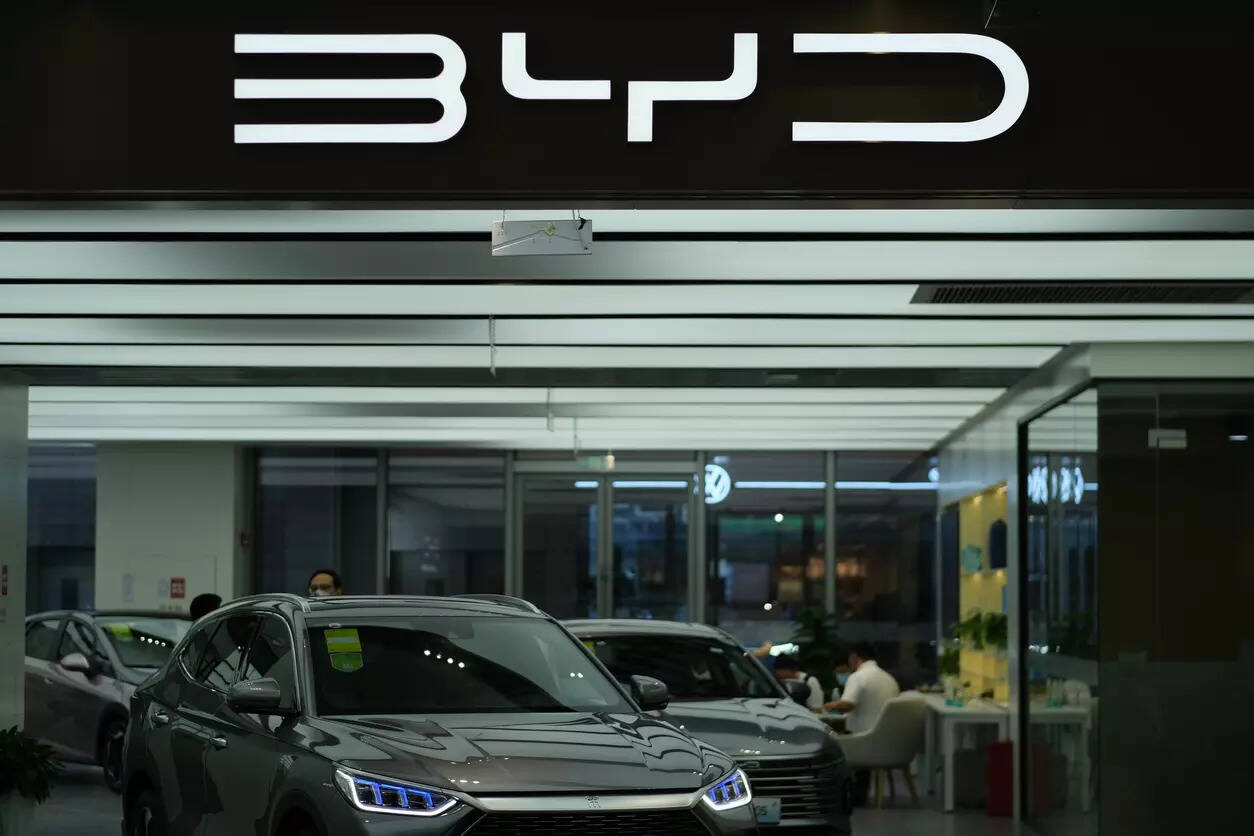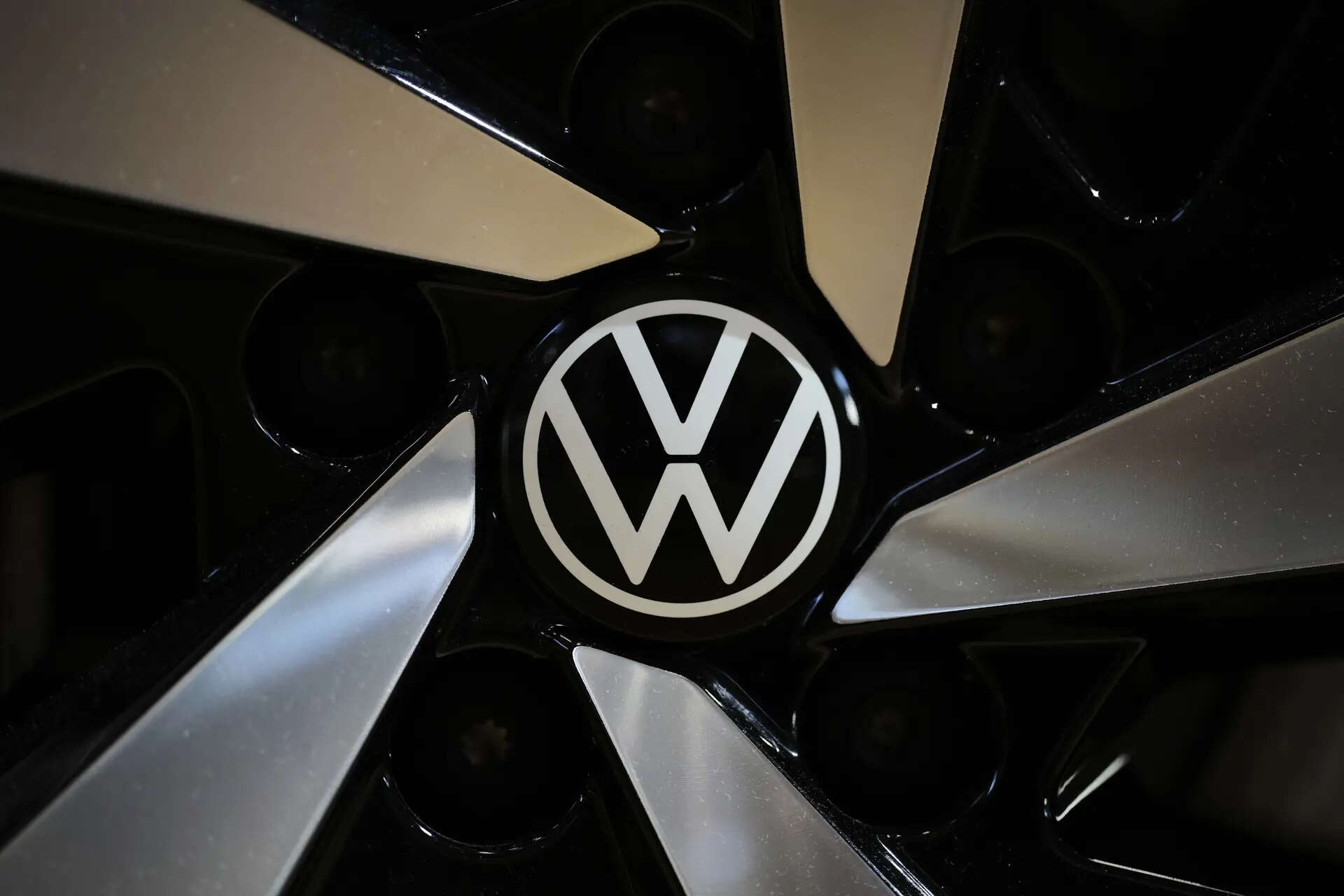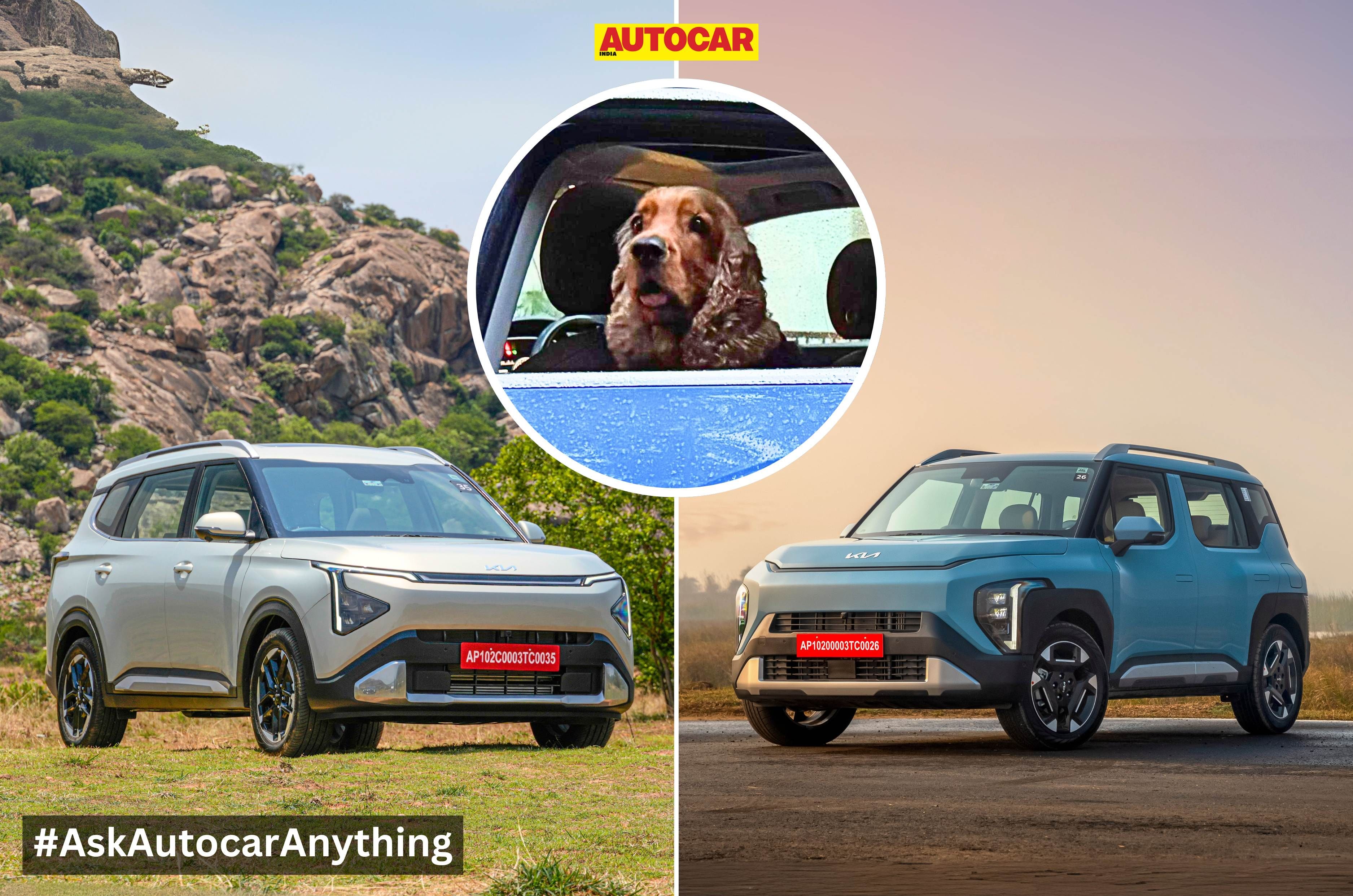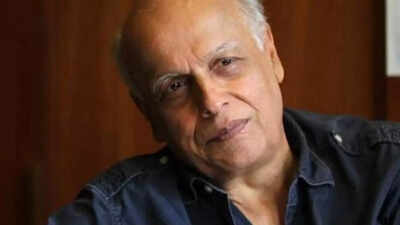India’s electric mobility journey began over two decades ago. We visit the man and the machine that started it all.
It was over 20 years ahead of its time – the first EV we tested and the first to feature on our cover back in May 2000. The Reva wasn’t a success; far from it. As an everyday car, it was compromised, with serious limitations in range, performance and practicality. But what it did achieve was far more significant: it sowed the very first seeds of electric mobility in India.
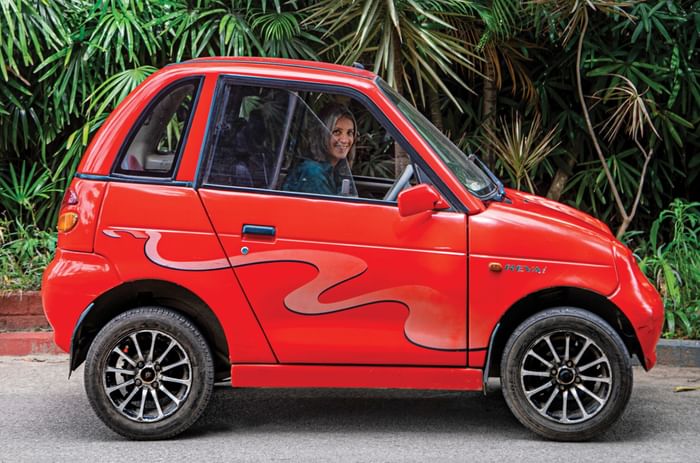
Getting a history lesson with the EV that started it all.
A quarter of a century later, EVs have become an inseparable part of our lives and the automotive landscape. So what’s changed since then? What was the Reva? What was it like building an EV in those early days, and who were the pioneers who actually bought these cars?
The Reva was the brainchild of Chetan handswhose father ran a successful precision tools business but always dreamt of building a compact city car. Chetan, however, was no stranger to EVs. He had led the University of Michigan’s solar car team, finishing third at the World Solar Challenge.
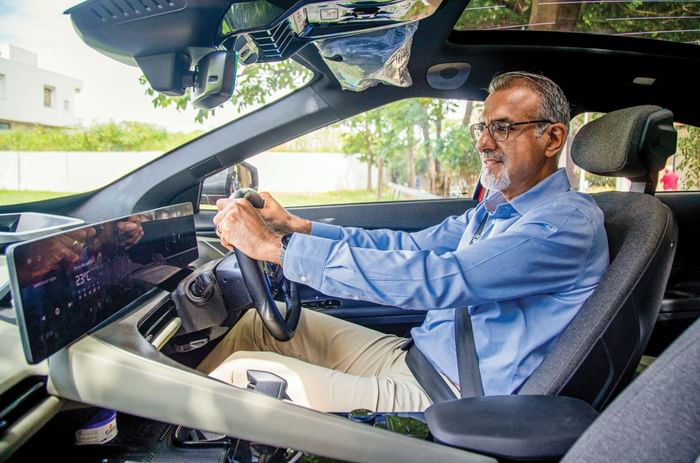
The father of the Reva, Chetan Maini, gets acquainted with today’s modern EV.
He later headed the powertrain division for Stanford’s electric car project and worked at Amerigon, a company specialising in EV technology, before returning to India. Combining his global experience with his father’s dream, he brought the Reva to life.
The name “Reva” carried layered meaning. In Sanskrit, it signifies “new beginnings”, but it was also an acronym for Revolutionary Electric Vehicle Alternative. And revolutionary it certainly was.
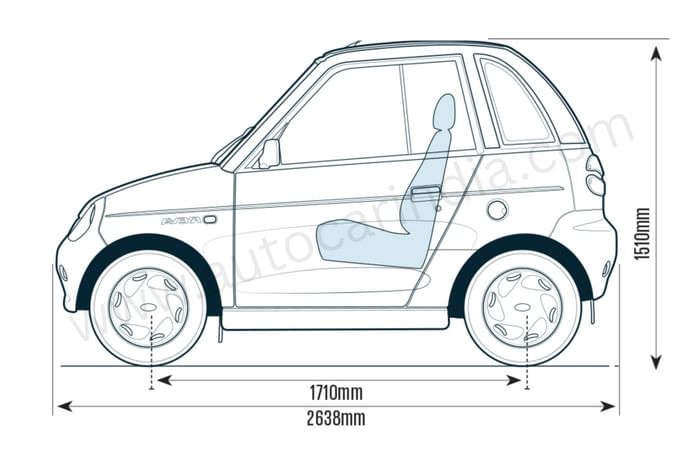
With its tiny proportions, two doors, no real boot and a compact 1,710mm wheelbase, the Reva looked like something straight out of an animated film. Its body was made not of sheet metal but of ABS – Acrylonitrile Butadiene Styrene – a high-impact plastic that was rare in India at the time. Lightweight, dent-resistant, and with easily replaceable panels.
By 2007, later models added regenerative braking that doubled up as ABS. Technically, the Reva was ahead of its time, but in terms of build quality, it remained quite basic. Its proportions were tiny, the interior very spartan and rough around the edges; the rear bench was barely practical – good enough only for a handbag at best.

Under the skin, the Reva was powered by eight 6V tubular lead-acid batteries, which were heavy. They fed an electric motor that produced 17.7hp and 70Nm of torque. The car weighed only 650kg, but 37 percent of that was just the batteries – reflecting the limitations of battery tech at the time. The range was very modest at about 80km.
Compare that to today’s Mahindra BE 6 with its 79kWh battery, which alone weighs 561kg, almost the weight of the entire Reva. It has 286hp, 380Nm of torque and a 500-plus km range. It comes with a modern cabin filled with screens and electronics, with space enough to carry your family and luggage. The leap in two and a half decades is staggering.
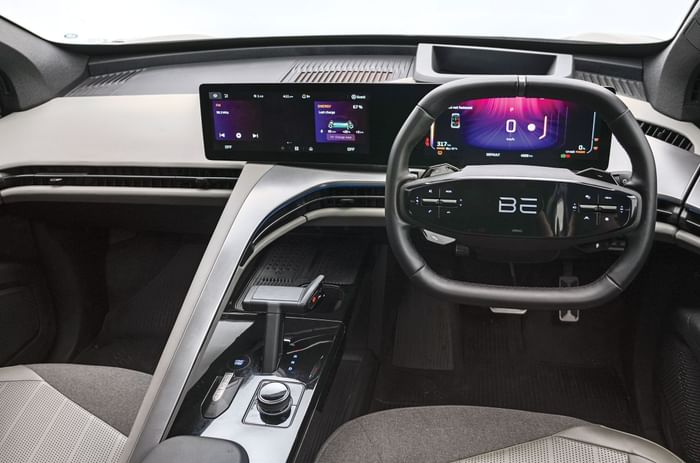
Touchscreens, HUD, and advanced analytics have really moved forward interior tech by leaps and bounds.
Taking the Reva for a short spin highlights that evolution even more. The one I am driving is bare-bones, its interior just about functional, and the quality of materials leaves much to be desired. But there were versions that offered ventilated seatsa music system and climate control. Imagine ventilated seats back then.
The Reva has a “boost mode”, which I engaged instantly, giving the little EV an instant burst of energy. With its light steering and instant torque, darting through Bengaluru’s traffic was a breeze. Parking? Not even a concern – the Reva could be tucked into the tightest of spots. It felt tiny and go-kart-like to drive; practical in traffic and even a little fun, but then, suspension thudding through potholes shook my bones, and the small sliding windows that open only halfway had me sweating it out.
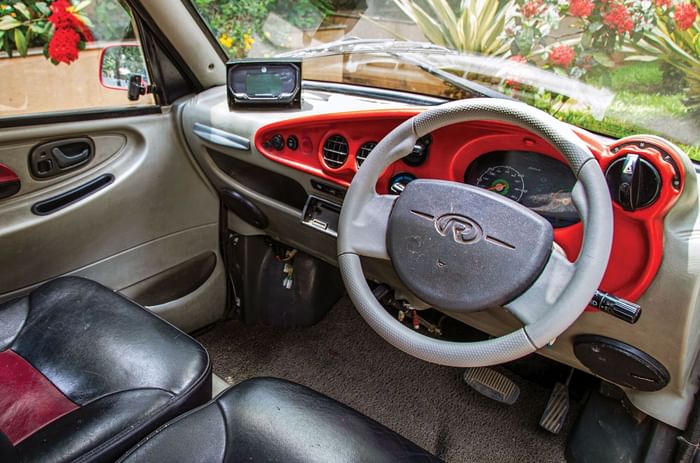
Yes, there was a screen, a PalmPilot for driving analytics – a precursor to today’s on-board apps.
The basic switches to shift to drive modes were fidgety, and the teeny tiny side mirrors were barely usable. Compared to any modern-day EV, it did feel crude, and while it was rough-shod even for its time, the Reva was still a small city-friendly vehicle that was remarkably easy on the wallet.
Next to the modern BE 6, it looks toy-like and like it could practically fit inside. In hindsight, the Reva was too far ahead of its time. A more refined, better-packaged version would be ideal for today’s congested urban commutes.
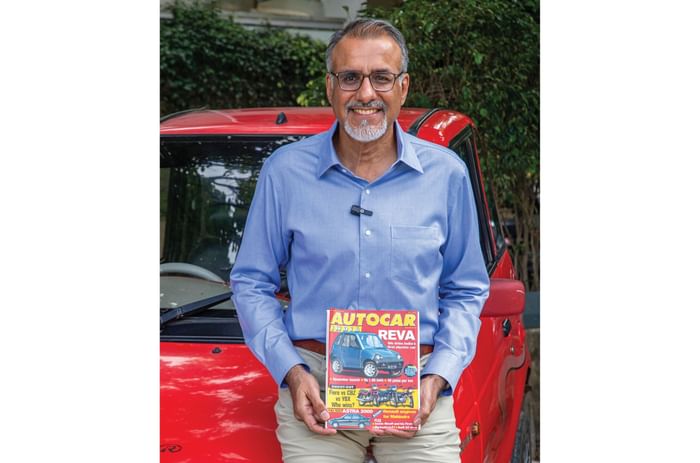
The first EV on an Autocar India cover.
A quarter of a century later, India’s EV revolution is finally here. And while today’s cars are bigger, faster, and more advanced, the humble Reva deserves credit for lighting the spark that started it all.
QnA: Chetan Maini, Founder of Reva Electric Car Company
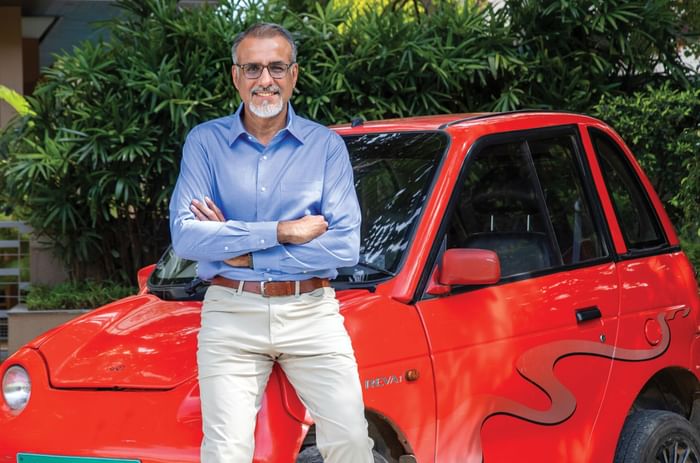
How does it feel when you see the Reva out on the road 25 years later?
It’s a really good feeling, and it’s not just about cars in India. My son was in the UK last year, and he sent me a picture of a car running there, and I said, ‘Wow, can you go close and give me the VIN number?’ And I saw it was a 2004 model.
So, why the Reva for India?
In the ’90s, racing solar cars, I thought: if you can cross a continent like Australia on the sun’s energy, that’s the future of India. Getting renewable energy and electric mobility together was an idea I felt India needed. But do we really need the high performance, or do we need something that is designed for Indian roads, where you can hardly go 65-70kph anyway? So, the product was designed not more for what I felt, but for what the market needed.
Range anxiety and resale value are concerns today. Was it tough to convince people to buy an EV then?
Everything was a challenge. From a technology point of view, no one knew how to even develop electric cars at that time. So, we had to train teams to do it. You couldn’t even go and get a car certified in the RTO, so we had to go to ARAI and set up the regulation. And then, it took us three months to certify the car because the forms only had CC on them for engine specifications. Be it financing or insurance, each aspect was so challenging. The car had thermoplastic panels, so I literally had to hit it for the insurance agency to see. In fact, in all our showrooms, we had the panels and hammers which customers could hit to see that they could take a fair bit and not get damaged.
‘Where will I charge?’ was a big concern. How will things work? So, it was a lot of education, more than anything else. I think once people got on it, they loved it because of the turning radius – easy to park. We also set up chargers at their homes one week before they bought the car. And we set up chargers in malls, in airports – over 8,000 charging points then.
And consumers loved the cost economics. There are consumers who are still using some of them after 20 years. So, I guess we did something right.
There were additional policy challenges; excise duty was actually raised on electric cars at that time, and import duties for parts were more as well.
Yes, the biggest letdown was that there was a Rs 75,000 subsidy, and a month before we launched, it was removed. We actually had a price set, Rs 1.8 lakh, but finally had to price it at Rs 2.5 lakh. So, that was a big hit.
So, is watching the evolution of EVs in the country interesting for you?
For sure. The batteries in this vehicle weigh 250kg and give you around 80km of range. In 2007, we introduced a lithium-ion battery that weighed approximately 80kg, probably giving you around 120km range. But today, probably that will be around 45kg to give you the same thing.
So, there’s a six times improvement from when we started to where we are today. Even in charging, there have been huge improvements. And that’s definitely exciting to see happen now.
Do you see a future with only EVs, or will other technologies come our way?
I really feel EV is the future. Once you drive an EV, especially the newer ones, the kind of instant torque you have, the quietness – those are unbeatable, and if you really want the sound, you can get it with the stereo. It’s a higher-performing car; the CG is lower, making it better to handle. Two-wheelers or three-wheelers – any form factor – I really think electrics are the way to go.
What do you think of the Mahindra BE 6 and other homegrown EVs today?
I think the last few years have been very exciting, and it’s really exciting to see Indian players and what they’re doing. The products and price points are fabulous. And I think it’s nice that car companies are thinking a little bit outside the norm. They’re pushing the limits, both on this design side, as well as fit/finish quality, and performance is way ahead, too. People have been convinced that this is not just a washing machine, which is what we originally used to imagine EVs as.
Setting up an EV supplier base at that point must have been difficult?
Yes, even creating electric air conditioning 25 years ago was a huge challenge. And remember, we offered seat ventilation back then; these days, it’s a big deal. And you also had a PalmPilot for European markets, which you could plug in and get all your data on how you drove; it was the precursor to on-board apps.
So, the supply chain liked the fact that we were actually helping them push the limits. And they felt this was the future, and they came on board. In certain areas, we had to set up separate businesses within the group company. So, we set up a charger division, a space frame division and a plastics division, because these are special plastics.
Also, you know, in 2001, we introduced tubeless tyres, but you don’t realise that even Mercedes didn’t have tubeless tyres. So, I had to work with Michelin as we imported these tyres from France, because they were very low in rolling resistance. It was a tough journey, but I’m really appreciative of those suppliers who were with us.
Do you think we’ll see a solar-powered car from Chetan Maini next?
That’s the shift for me, as I’ve moved from Reva to Sun Mobility. How can I be an enabler for this ecosystem to help multiple OEMs and democratise this energy? That’s the next challenge.
QNA: Madhukar Naik, Reva Owner Since 2011
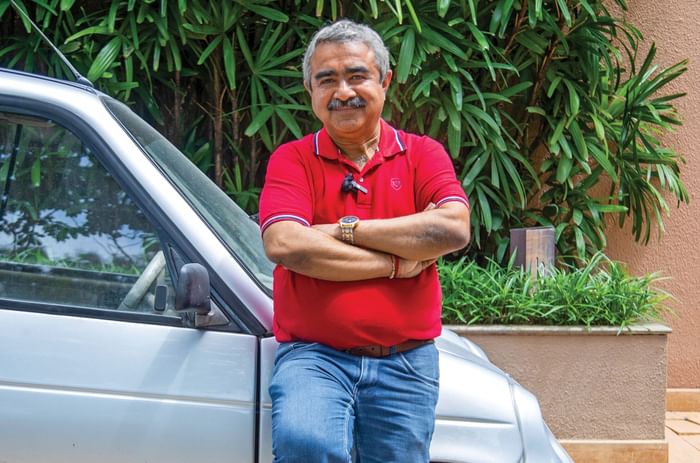
When did you buy the Reva, and have you been using it since then?
I think it was in 2011 that I purchased this car, and yes, it’s now been 14 years of use, all without any hassle. In my house, it’s like one of my family members, and we have named it Chintu. Every day, there is a fight for who gets to take this car. My elder daughter, who is in 12th standard, ever since she was in fifth standard, has to go to school in this car only. If this car is not there, then there is no school.
Back then, there was not much charging infrastructure. What convinced you to buy this?
The first thing that convinced me at that time was the affordable price. For my daily commute, office to home, I didn’t need much range. Today, every bit of money spent, I have recovered in just fuel costs and saved so much. They provided me with a charger at home; I would plug it in at night, and in the morning, it would be ready, and it easily gives 70 to 80 kilometres even today.
What do you think about the big change that you see in EVs from then to EVs now?
Now, people are more conscious about nature and pollution. So they want to give a little bit of their contribution to save our Earth. Charging infrastructure has also developed. The new EVs are fantastic.
What is it like driving the BE 6?
It’s like going from the old Nokia keypad phone to the iPhone. It’s so modern, smooth and powerful, but it feels huge. I would have to be super careful in Bengaluru traffic; with my Reva, it’s easy. The thing about electric cars is that the cost of battery replacement is nearly a new car’s price, so that’s a big challenge that needs to be addressed.
How has battery life been in the Reva?
It has now been 14 years. I have changed the batteries twice since. With them being lead-acid, the battery pack gives me around five and a half years and an average of 40,000 kilometres. It is still affordable for me, and they are easier to replace. As for service, I can still get mechanics who come home to do any work that needs to be done.
Also see:

![[09-20-2025] Man Dies Following Crash in Bakersfield [09-20-2025] Man Dies Following Crash in Bakersfield](https://arashlaw.com/wp-content/uploads/2020/09/free-police-report-desktop-2.jpg)





